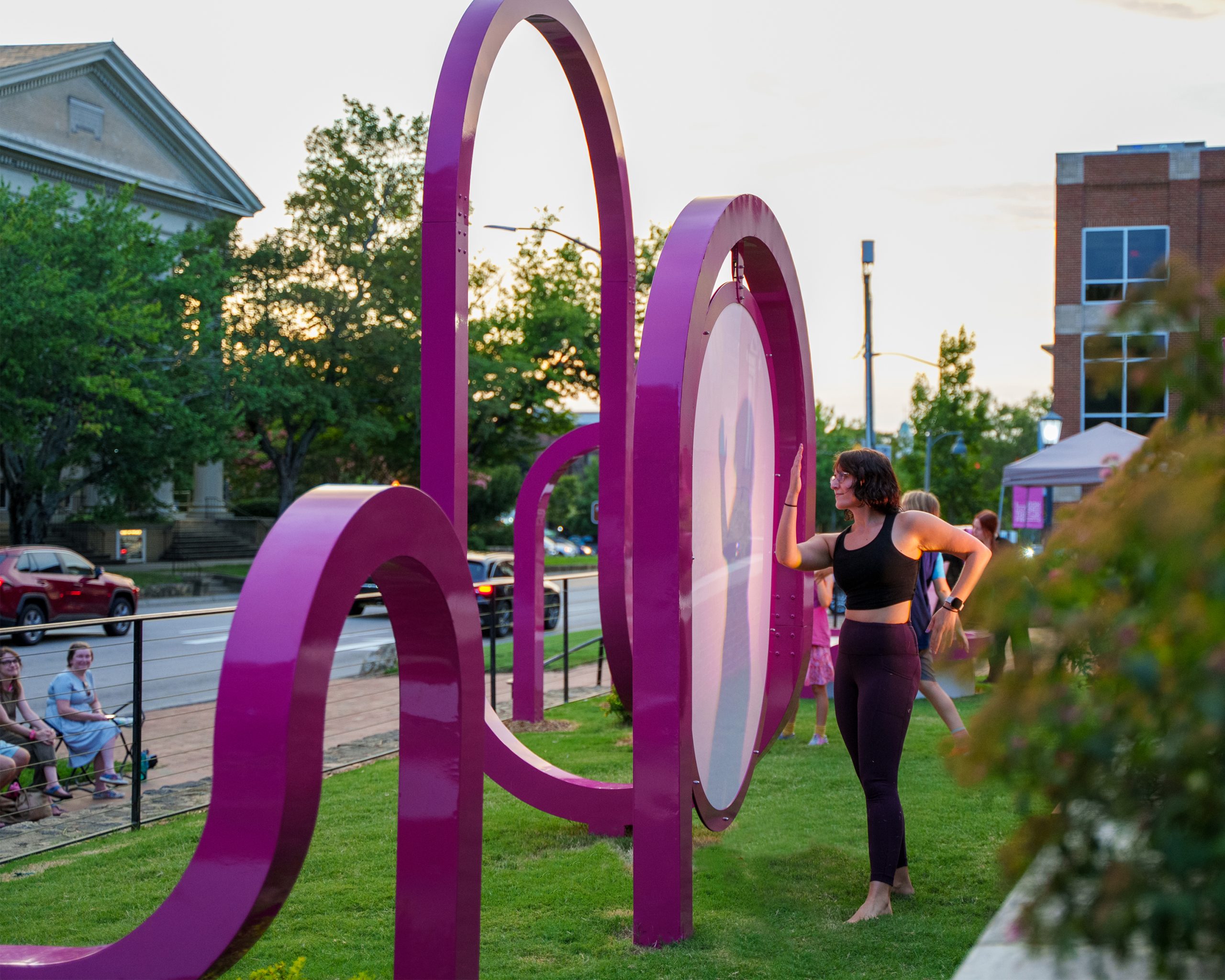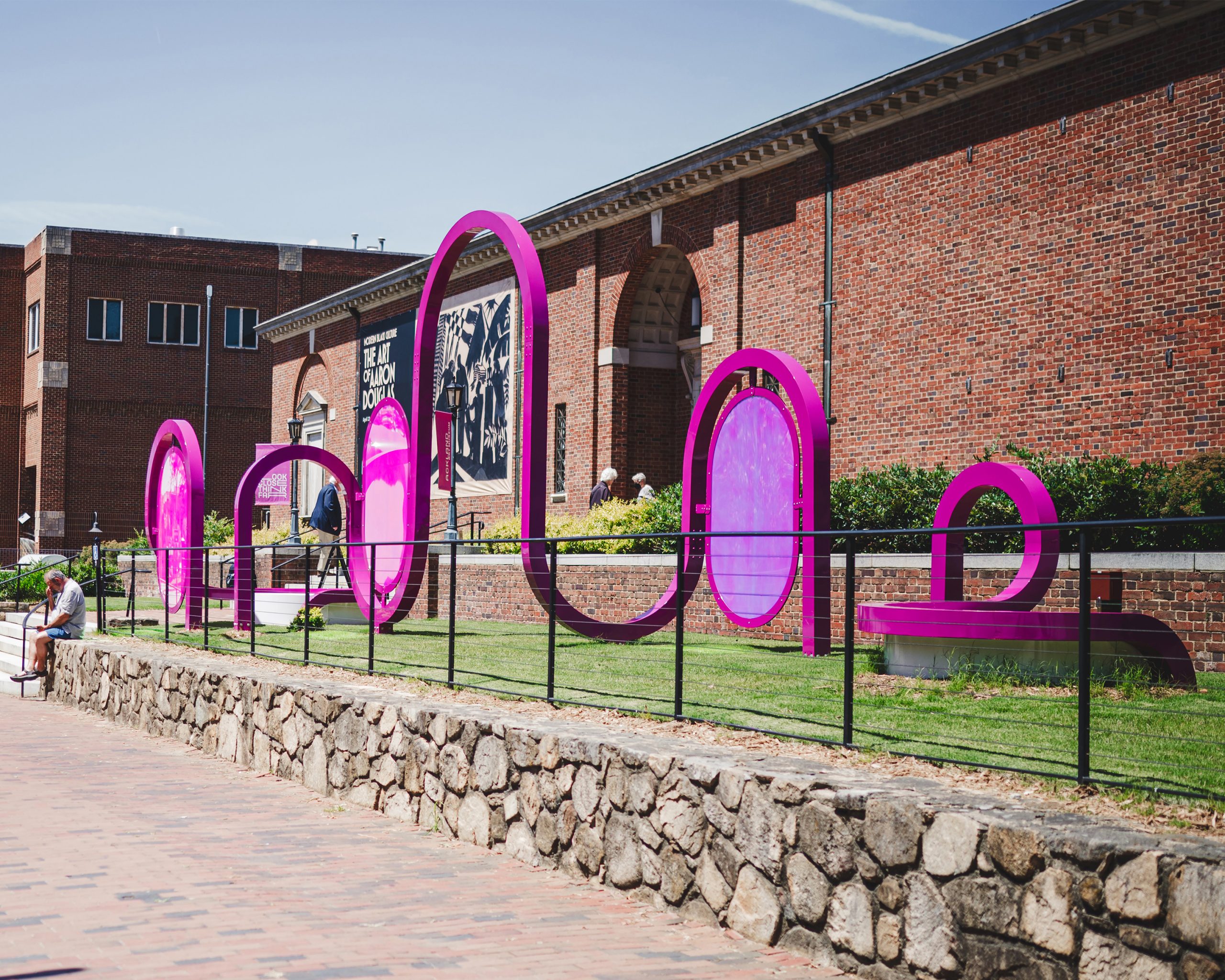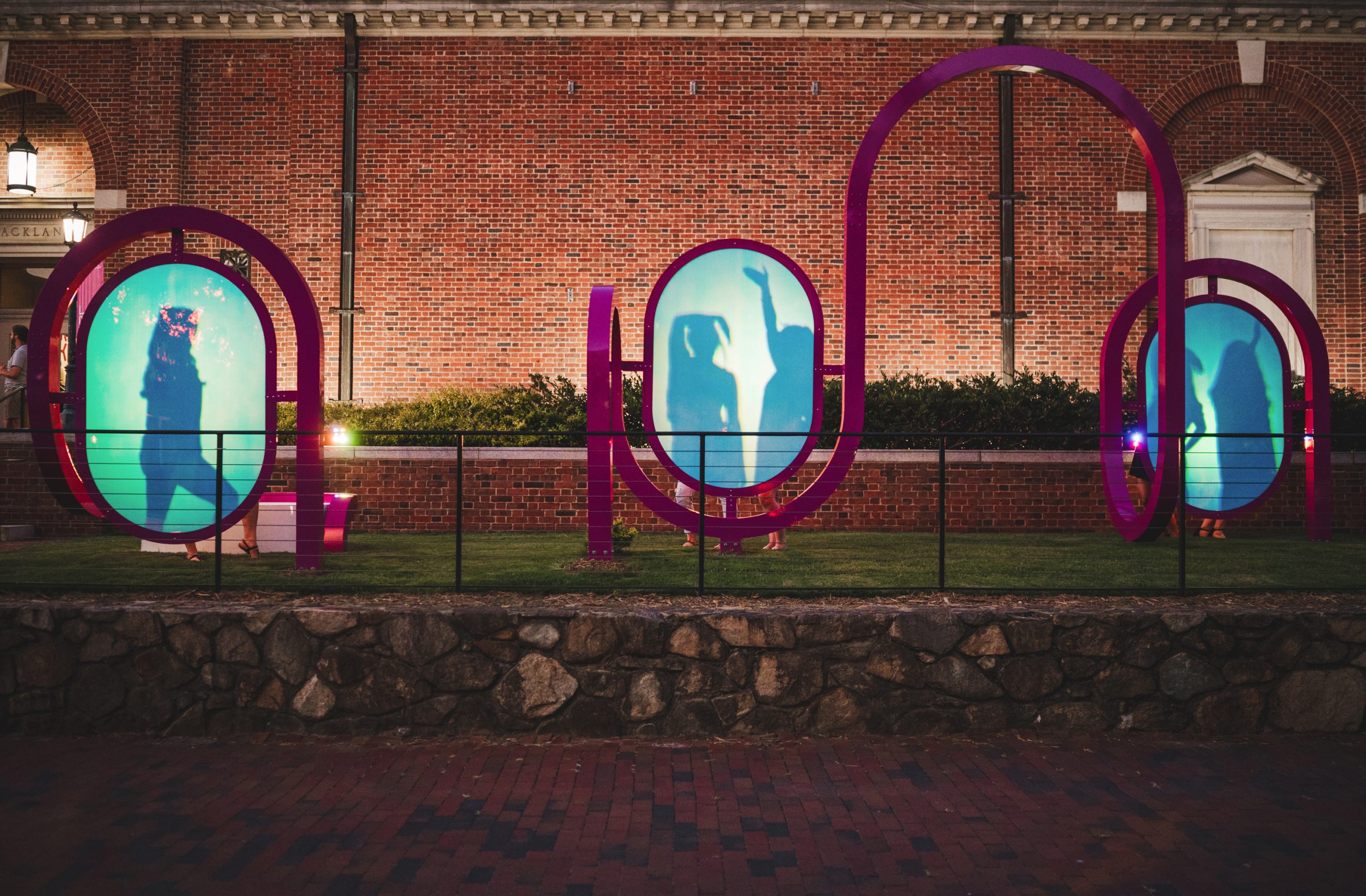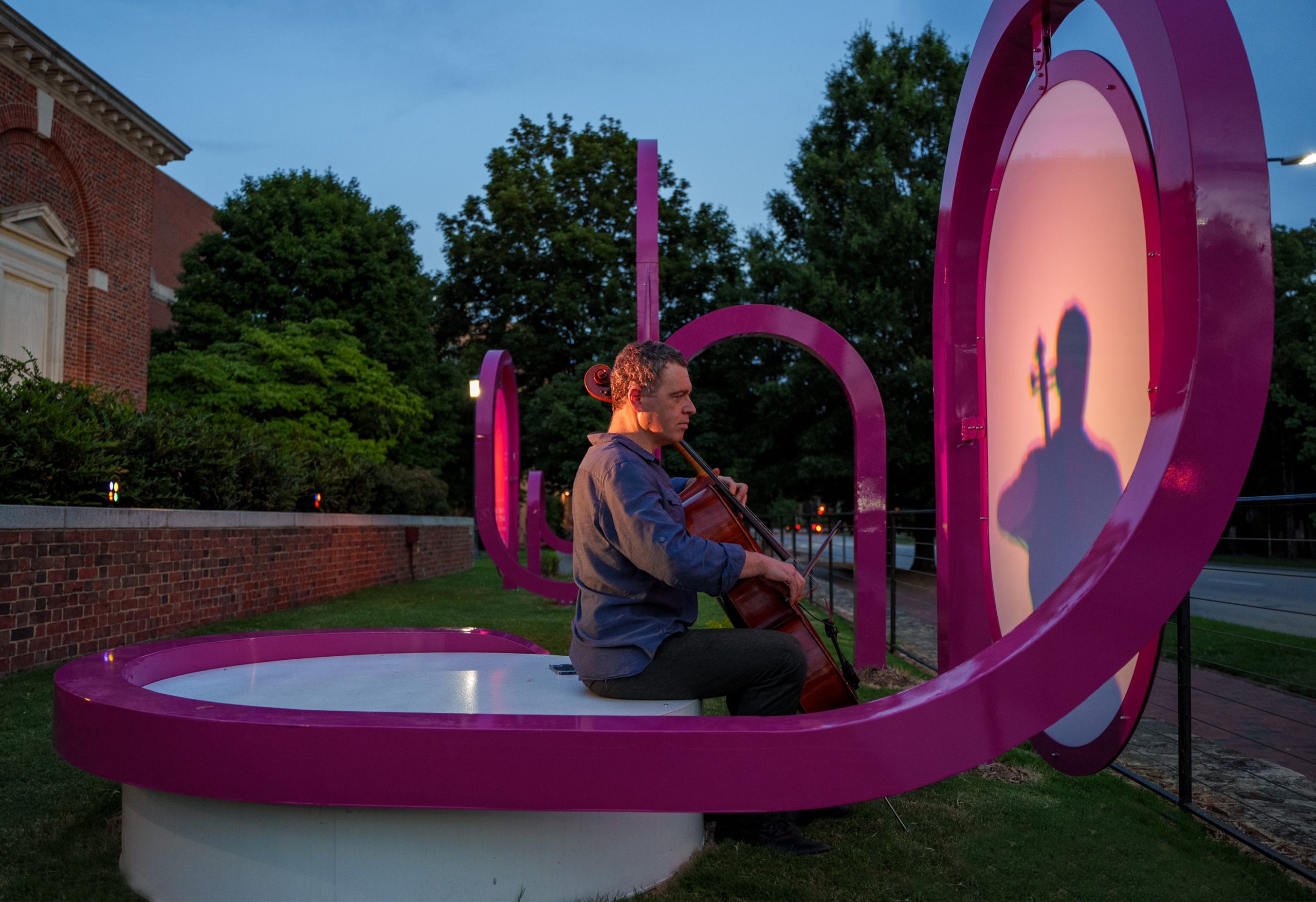





Client: University of North Carolina & Ackland Art Museum
Location: Chapel Hill, NC, United States
Completion date: 2022
Project Team
Principal Designer / Fabricator
Ryan Swanson
The Urban Conga
Principal Designer
Maeghann Coleman
The Urban Conga
Designer / Fabricator
Juan Esparza
The Urban Conga
Client
Ackland Art Museum
Client
University of North Carolina
Structural Engineer
Daniel Swanson
Midwest Design Group
Overview
pARC is an open-ended programmable extension to the conversations, activities, education, and other programming that currently exists within the doors of the Ackland Art Museum. The design of pARC both mimics and challenges the Georgian-style architecture of the museum. It adopts the symmetrical composition and breaks it into a series of interconnected arcs. These series of arcs grow up from the ground to frame out various social spaces that allow the users to put their own identity onto the work, the museum, and the surrounding space. It becomes an open-ended space evoking endless ways to play, gather, perform, teach, converse, or even nap. The space is transformed through the interactions of its users and surrounding context. It responds to the user and environment through the manipulation of light both during the day and at night as a tool to evoke moments of joy and wonder in the space. As visitors pass the work, they begin to realize their movement changes the colors of the panels. The shadow play component of the work can be utilized in different areas of the work throughout the day.Goals
The Ackland Art Museum is a free space museum in Chapel Hill that hosts a surplus of diverse programming within its doors, but many community members were unaware of the museum and what it had to offer. Many community members also were deterred by the museum's cold architecture and felt it wasn't welcoming. The design of this spatial installation was a part of the museum's rebranding to better connect with the surrounding community. The installation also highlights how designing with open-ended play methodologies can be utilized as a tool in the democratization of art institutions by taking art off the pedestal and allowing people to take a sense of ownership of the work and space. The space is transformed into a communal landmark of social activity, activating a once underutilized space and inviting people into the museum who might have never been aware or felt comfortable entering.
Process
The Urban Conga designed the spatial intervention through a series of participatory design workshops with community stakeholders and museum representatives. The feedback and input of the community, school, and museum representatives led to the final design of the space and future public programming in the work. The Urban Conga coordinated with the school facilities department and the museum staff to install the work and lighting on the public terrace. Once the work was installed, The Urban Conga worked with the museum to shift some of their programming to the space. This included reading sessions, lectures, performances, and more.